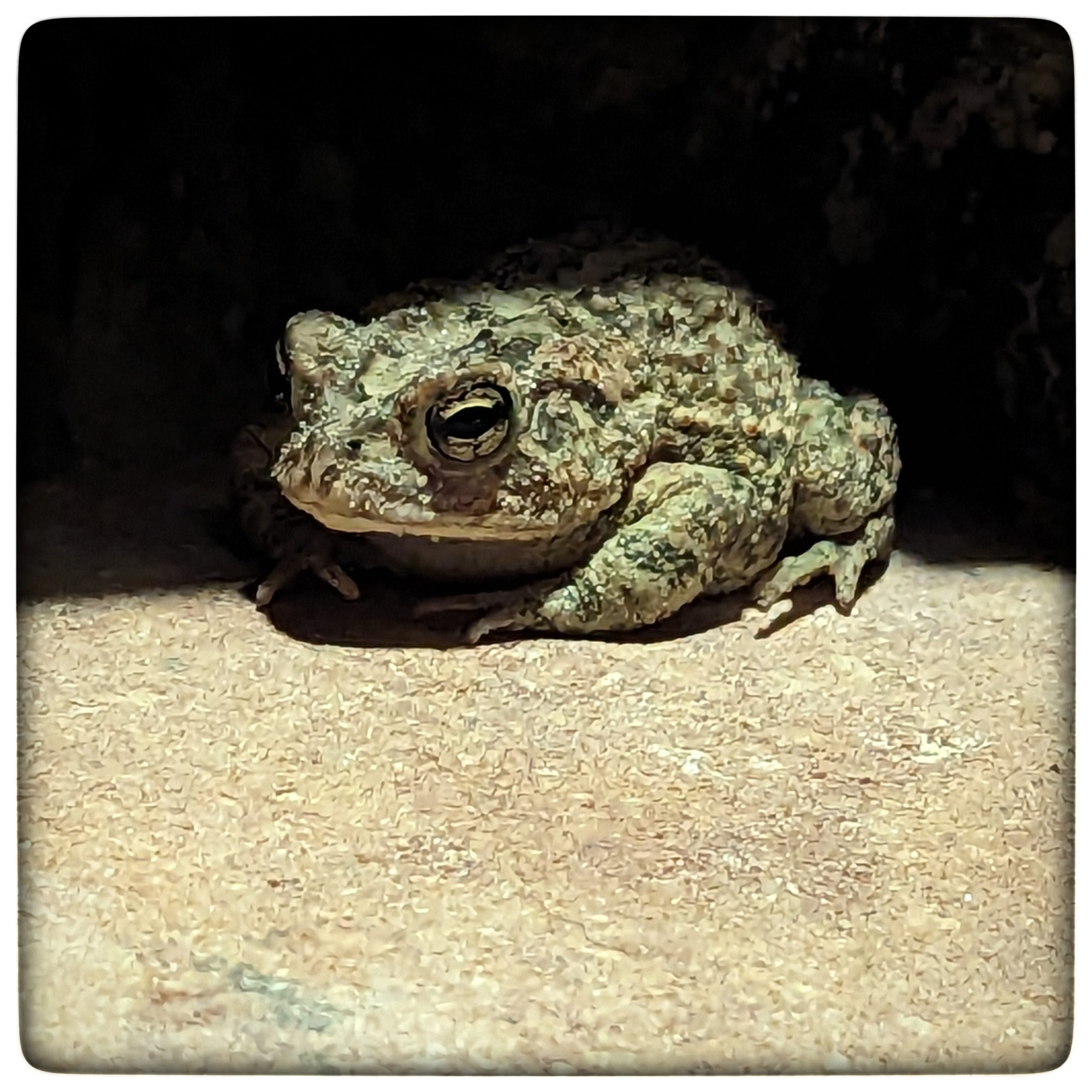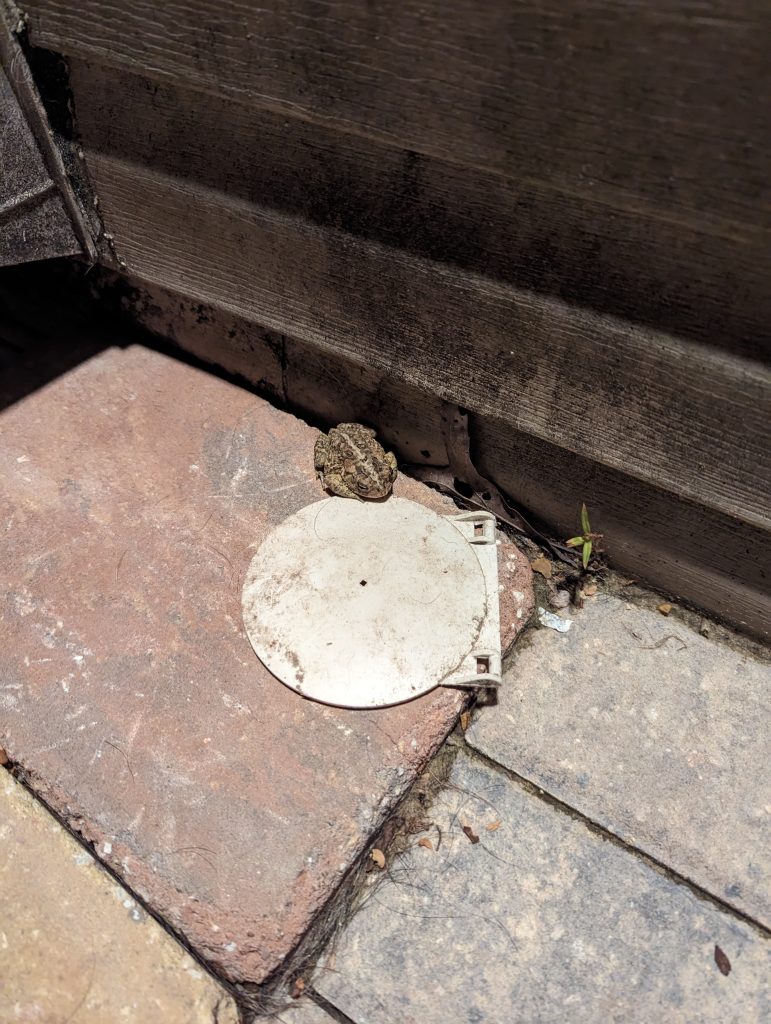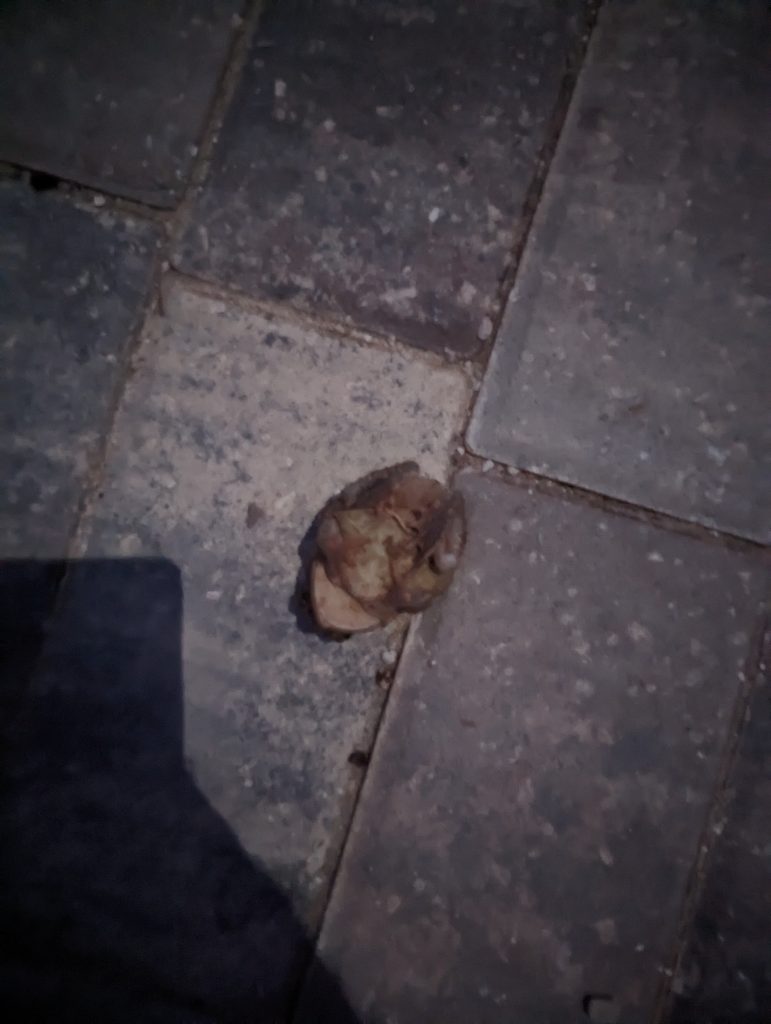
Hop on over here and learn about Gopher Frogs
Every now and then over on Facebook I like to show off a new picture of Back Yard Froggy; every time I do, I wind up having to answer half a dozen “toads can be deadly to dogs, don’t let your dog lick it!” statements. Statements like this come from a place of love and concern, I get that and I appreciate that! But I’m tired of typing out everything I know about Gopher Frogs so I thought I’d write a blog post so I could just link to it every now and then. Especially because there is a new, baby frog out there and he’s hella cute and I got some good photos of him.
Look how twee he is! He or she, I’m not sure. It doesn’t matter, it’s heckin’ adorable. OK. Now let’s get to some learnin’.
Let’s start off with this first – this is a non-poisonous, native Gopher Frog. No native Florida toads or frogs are poisonous to dogs – Cane Toads (also called Bufos) and Colorado River Toads (sometimes found in Florida in spite of the name) are toxic to dogs but that’s not what our little friend here is. I have them all over the property thanks to my Gopher Tortoises (I’ll get into that in a second). Having said that, all frogs and toads have mild secretions that can be irritants, and licking them can cause excessive salivation because of the nasty taste.
This is a pretty full-grown specimen; I know you can’t tell from the photo but he’s almost four inches long. Typically they grow between 2-4 inches long, so this guy is definitely at the top of his class!
Gopher frogs get their name because they tend to live in Gopher Tortoise burrows. They will also live in the burrows of the Pocket Gopher, colloquially called Sandymounders*. Decaying root systems of dead trees also make good Gopher Frog homes.
Like most other animals in the Sandhill ecosystem, the primary threat to them is the destruction of the ecosystem. They primarily live in Longleaf and Sandhill areas, and while they were taken off the Threatened Species list in Florida in 2017, they are still classified as NT (“Nearly Threatened”… a classification that for some reason reminds me of Earth being “Mostly Harmless”). However, they do have predators in owls and snakes, and thus they tend to stay as close to the safety of their burrows as they can. In the case of my Back Yard Froggy Family, I suspect they might be living in my dryer vent, or somewhere close to it, since that’s where I usually see them.
Gopher frogs have fantastic, deep, guttural voices and as around here their breeding season coincided with the rainy season, even though we’re a few hundred feet away from the nearest body of water we can hear them almost every night. Loudly. To the point where I’m really kind of glad I don’t live on the lake.
They don’t need to live in or near water year-round, however, during breeding season they will travel up to a mile in any direction to find shallow pools of water. Females lay between 2000-5000 eggs and once hatched the tadpoles can take anywhere from three to seven months to metamorphose. That may sound like a frightening number of babies, but predation on the tadpoles runs pretty high and a good number of them don’t make it to frog-dom.
Another thing about juvenile frogs is that part of the metamorphose transition is going from the wet habitat of the pond or lake to the terrestrial habitat they will populate as adults. Juvenile frogs can easily dehydrate, and thus cool burrows become not just safety from owls and snakes, but also from the sun as they learn to navigate their new environment.
Gopher Frogs are wonderful at camouflage. Similar to Pine Lizards and the Pygmy Rattlesnakes, their gray and black coloring fades into the Turkey Oak trees and makes them hard to spot. Couple that with them easily covering themselves with sand and they really will look like part of the ground – I’ve mistaken part of them for dead branches often! If only I were faster with my camera, I’d have a lot more photos of them.
Their diet consists of beetles, spiders, crickets, other small invertebrates and sometimes other small frogs and toads.
Fun fact – frogs will full on flip over and play dead when motion-inspired predators are around. One night I caught Peppa really interested in what I thought was a rock…. Spoiler, IT WAS NOT A ROCK. How do I know he was alive? as soon as I pulled Peppa back HE STARTED BLINKING AT ME – I was holding Peppa with one hand and trying to get my camera to take a flash picture with the other. Right after this he flipped himself over and hopped off.
* I asked my father when I was about 15, “what makes those giant piles of sand out in the fields” and he replied “Sandymounders.” I loved my dad but he was a consummate bullshitter, so for years I thought he had been pulling my leg. Turns out they really are called that. Sorry, Daddy!










